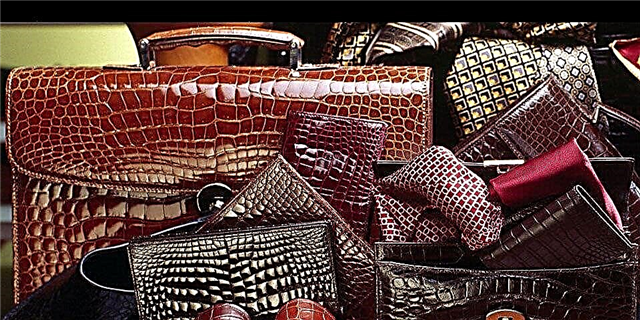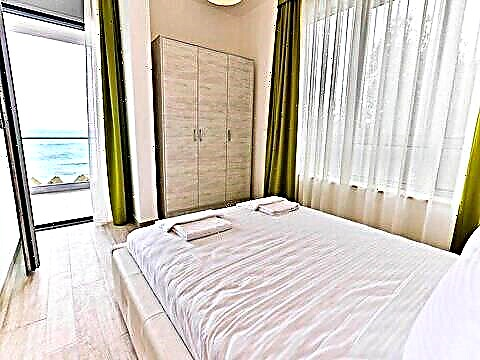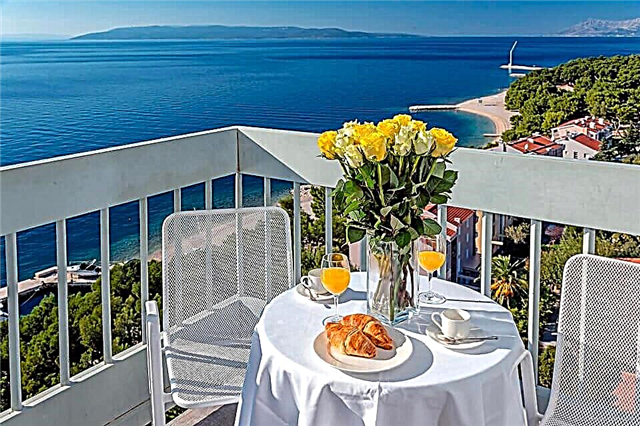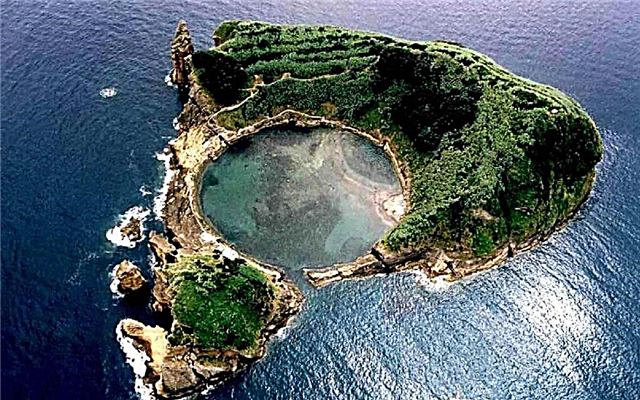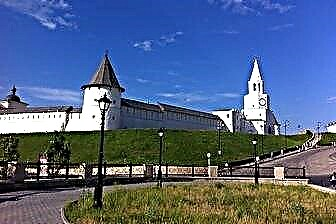Kazan is recognized as a real decoration of the Volga region and the pride of all of Russia. Kazan has long caught up with Moscow and St. Petersburg in terms of attractiveness for tourists. The ancient capital of Tatarstan is a student, cultural, sports and historical center, where all the fun is always happening.
A trip to Kazan promises to please with a rich excursion program, which, in addition to the famous Kazan Kremlin and the magnificent Kul-Sharif mosque, will include dozens of other historical sites. Tourists will have the opportunity to plunge into the world of national traditions of the Tatar people, taste local cuisine and watch beautiful rituals.
In the warm season, there is nothing better than a river walk along the Volga or a romantic dinner on a pleasant summer veranda. A promenade in the evening Kazan is the best pastime after an eventful day.

The best hotels and hotels at affordable prices.
from 500 rubles / day
What to see and where to go in Kazan?
The most interesting and beautiful places for walking. Photos and a short description.
Kazan Kremlin
The cultural ensemble and the main archaeological complex of Kazan, where historical monuments of the XII-XX centuries are located. Eastern and Western cultures are harmoniously intertwined on the territory of the Kremlin - the domes of the mosque are perfectly combined with the bell towers of the Orthodox church, the Turkic tower is adjacent to the mansions built in the classical European manner. The Kremlin is also the seat of the head of the republic and its government.

Kul Sharif Mosque
The main mosque of Tatarstan is located within the Kazan Kremlin. It was erected in the period 1996-2005 on the site where the most famous mosque of the Kazan Khanate once stood. The ancient temple was destroyed by the troops of Ivan the Terrible during the conquest of Kazan in the 16th century. The modern building is an architectural masterpiece of white stone with sky blue domes. The mosque surprisingly harmoniously blended into the ensemble of the Kazan Kremlin.

Bauman street
The main promenade of the city, where all tourist routes lead. It turned into a pedestrian street in 1986. The alley begins at the Kazan Kremlin and stretches through the city center for 4 km. During the reign of the Golden Horde, the Nogai road ran in this place. On Bauman Street there are many historical buildings, monuments, museums, a theater, countless cafes and souvenir shops.

Old Tatar settlement
One of the important historical sights of Kazan. Its pedestrian zone stretches for half a kilometer from Bauman Street and occupies a part of Kayum Nasyri Street. The area was formed in the 17th – 18th centuries. Architectural beauties, mosques and other attributes of Tatar culture appeared. In Soviet times, most of them were lost. In the 2000s, the territory was reconstructed to give it its former splendor.

Annunciation Cathedral of the Kazan Kremlin
An architectural and historical monument of the 16th century, erected in the era of Ivan the Terrible. Over the past centuries, the cathedral burned six times and was restored several times. The last reconstruction was carried out in 2005. The building is an example of Pskov church architecture; it was built from limestone quarried on the banks of the Volga. The relics of the Primate Guria rest in the temple. At various times, Peter the Great, Catherine II, A. Pushkin, S. Rachmaninoff attended services in the cathedral.

Peter and Paul Cathedral
Orthodox church of the 18th century, erected in honor of the visit of Peter the Great. The construction was carried out according to the idea and at the expense of the merchant Mikhlyaev. Important shrines are preserved here: the icon of the Mother of God of Iverskaya, the icon of the Smolensk Mother of God, as well as the relics of Metropolitan Ephraim, who crowned the first representative of the Romanov dynasty during his reign. After years of misuse and desolation, the temple was returned to the Church in 1989.

Temple of all religions
An interesting and a bit strange (according to some tourists) sight of the modern times. The ecumenical temple was built by the forces of Ildar Khanov, who was a prominent humanist and sought to harmonize space with the help of his creations. Within the framework of the concept of "a temple of all religions", 16 confessions are united in one territory, but no religious rituals are held here, since the complex has a symbolic meaning.

Al-Marjani Mosque
In the second half of the 18th century, local merchants enlisted the support of Catherine II and received permission to build a stone mosque. The current name of the religious site is in honor of one of the imams. The minaret is built on the roof. The decoration is dominated by Tatar ornament. Nearby are the Islamic College, the local clergy building, the Islamic literature store and the Halal grocery store.

Tower Syuyumbike
The attraction is located within the territory of the Kremlin. This is a 17th century building; earlier in the 11th-15th centuries a wooden tower stood in its place. One of the legends about the origin of the tower tells about the queen Syuyumbika, to whom Ivan the Terrible allegedly wooed. The queen did not agree and set an impossible condition - if in seven days he can erect a high tower, then there will be marriage. The king coped, and Syuyumbike threw herself down from this tower.

Bell tower of the Epiphany Cathedral
The building is 74 meters high, crowning the Epiphany Cathedral. Located on the walking tourist Bauman street. For a long time, the bell tower was considered the highest in the capital. It was erected in the 19th century according to the project of the authors G. Rusch and M. Mikhailov in the style of "Russian baroque" with a myriad of external decorative elements. Inside the tower there is a small church of St. John the Baptist.

Farmers' Palace
Palace complex 2008-2010 buildings in a solemn, monumental and somewhat pompous style (somewhat reminiscent of Austrian and Italian palaces of the 18th-19th centuries). During and after the completion of construction, the ensemble was criticized for the inappropriateness and inadmissibility of finding such a building near historical sites. More than 2 billion rubles were spent on the project. The Ministry of Agriculture of Tatarstan is located here.

Family center "Kazan"
The original landmark is a remake that appeared in 2013. The building serves as the Wedding Palace. Inside there are three thematic zones, which are decorated and furnished in the style of the Volga Bulgaria, the Kazan Khanate and in a classical manner. The top is crowned with a huge cauldron (Turkic cauldron). On days free from registration of weddings, tourists can visit the attraction and go up to the observation deck.

Puppet theater "Ekiyat"
Founded in 1934. Translation of the name from Tatar - "Fairy Tale". By the standards of puppet theaters, it is quite large: about a hundred employees, and a third of them are puppeteers. The repertoire consists of 50 fairy tales, many of which go on for decades. The dolls themselves are different in appearance and manner of manufacture: the whole range from classic to modern is presented. In 2012, the theater building was reconstructed, and a colorful park appeared around it.

National Museum of the Republic of Tatarstan
The main museum of Tatarstan, one of the largest in the entire Volga region. Opened to the public in 1895. The museum collections contain about 800 thousand exhibits that tell about the culture, history, life, traditions of the peoples of Tatarstan. Visitors consider this museum one of the most interesting in Kazan and are happy to return to it again, since it is impossible to see all the exhibitions at one time.

Museum of Natural History of Tatarstan
The only museum in the Volga region with such a detailed exposition on this topic. It has been accepting visitors since 2008. One of the first collections is the collection of minerals. Added to it were dinosaur bones, invertebrate fossils, meteorite samples, a working model of a mud volcano. Mini-excavations have been created for children. In the aquarium, you can feed the "prehistoric" fish. Astronomy lovers have access to a large telescope and separate excursion programs.

Center "Hermitage-Kazan"
The program of cooperation between the Hermitage and Tatarstan began in 1997. Large art exhibitions were organized up to 2004. It was then that the Hermitage-Kazan Center was founded, which became part of the Kazan Kremlin Museum-Reserve. In addition to exhibition halls, there are premises for lectures and conferences, computer classes. And not only paintings are exhibited, but also objects of decorative and applied art.

Slava Zaitsev Gallery-Workshop
It is located in the historical center of the city - at the station square, at the intersection of Chernyshevsky and Burkhan Shahidi streets. The exhibition space is occupied by paintings and installations created by the artist without the usual tools, including without paints. Slava Zaitsev uses materials at hand, such as earth, threads, nails. Visitors also have access to the creator's workshop: they can watch the birth of another masterpiece in real time. A creative studio also works here.

Museum of Socialist Life
Founded in the 90s on the personal initiative of Rustem Valiakhmetov. He bought paraphernalia and goods that were popular in the recent past. The collection was housed first in the apartment, then in the basement of the house. Artists and musicians gathered here, making a private collection also of a creative living room. In 2011, the government of the republic allocated a former communal apartment to the museum, and it received official status.

Konstantin Vasiliev Museum
An art gallery named after the artist has existed in the city since 1996. In 2013, a new museum opened on Bauman Street in a historic building - the Petzold House. The permanent exhibition consists of 160 works by Vasiliev. A corner with his personal belongings and a spacious archive were also created. On the basis of the museum, lectures and all kinds of social events are held, which makes it also a center of leisure.

Alexandrovsky passage
An architectural monument of the late 19th century by St. Petersburg masters N. Pozdeev and V. Suslov. The building was erected with the money of a wealthy merchant Aleksandrov. The dealer planned to place retail space on the lower floors and an apartment building on the upper floors, but he was unable to profit from the lease. The merchant's sister bought the house, but soon resold it to the city authorities, seriously losing in price.

Shamil's house
A 19th century mansion that once belonged to the family of the notorious Imam Shamil. After a fire at the beginning of the 20th century, the building was restored in accordance with the best European architectural traditions, adding a few national touches. After being confiscated in 1919 in favor of the state, the mansion became a residential building. People lived here until 1981. Five years later, a museum was opened in the house. poet Gabdulla Tukay.

House of Ushkova
Luxurious building of the early XX century, erected by the project of Karl Müfke. Before the Revolution of 1917, it was owned by the surname Ushkovs - a well-known trading dynasty. Alexey Ushkov built this house for his bride. Until now, the mansion is considered the most beautiful in Kazan. Once there were apartments for rent and fashion shops, after 1919 the local authorities placed a library inside.

Millennium Park
Park, laid out to celebrate the millennium anniversary of the founding of the city in 2005. The territory consists of several thematic sections. The Millennium Alley is designated as the central zone. A special place is occupied by the "Crossroads" zone, as it symbolizes the intersection of Asian and European cultures. The park is a popular place for recreation, walks, mass celebrations and various performances.

Victory Memorial Park
In the 70s of the last century, the swampy urban area was planted with bushes according to the number of days of the Great Patriotic War - 1418. The modern memorial complex was opened in 2005. The eternal flame was surrounded by a pantheon, where the names of the Heroes of the Soviet Union and holders of other high orders are carved. The artificial lake hosts competitions among radio-controlled models. There is a museum of military equipment, for example, tanks are exhibited in the open air.

Gorky Park
One of the largest parks in the city. Its area has decreased since the 18th century and is now about 1 hectare. The territory has a long-standing name - "Russian Switzerland". In his youth, the park was visited by Maxim Gorky, after whom this corner of greenery was later named. The last reconstruction took place in 2014. Then they planted about a thousand trees, built sports grounds and outdoor cafes.

Monument to Musa Jalil
A monument dedicated to the revered national hero, the poet Musa Jalil, who actively fought against the Nazi occupation and was executed by the Germans in 1944. He posthumously became a Hero of the Soviet Union. The monument adorns a square near the Kremlin. Flowers are laid at the foot twice a year and solemn processions are organized, paying tribute to the memory of the feat of the fearless poet.

Monument to the Cat Kazansky
A funny statue of a sly, contented and fat cat on Bauman Street in the center of Kazan. Dedicated to the fictional cat Alabrys, who was brought from here to St. Petersburg to catch mice and showed himself well in the hunt. So good that it was celebrated by Empress Elizabeth. This lovely story inspired the sculptor I. Bashmakov, and in 2009 the city received an interesting, funny and good-natured "monument".

Monument to the dragon Zilant
This mythical creature can be called a symbol of the city. The dragon adorns the flag and coat of arms of Kazan. It has appeared on the streets of the capital of Tatarstan since 2003. The monument was created by Marat Gubaidullin. Several legends are associated with Zilant, so visiting the sights is a must on the route of sightseeing tours. In 2011, restoration work took place: the sculpture was added with golden scales and made it slimmer.

Waterpark Riviera"
The entertainment complex is divided into two parts - closed and open. The first one works all year round, the second one - seasonally. In total, there are about 50 attractions here. There is an area for the little ones, as well as for those who want to tickle their nerves. The highest speed slide is called Kamikaze, and the longest is Niagara. A Turkish bath, several jacuzzis and a Finnish sauna will appeal to those who love measured relaxation. There are bars and cafes on site.

Kazan Arena stadium
The home stadium of the Rubin football club was built from 2010 to 2013. The sports facility is multidisciplinary: competitions in various sports were held here, a media center for major events was based, and concerts were held. Kazan Arena is the only football facility where several world swimming records have been set. To host the World Aquatics Championships, the stadium was temporarily rebuilt. In addition, the facility hosted the Universiade and the 2018 football World Cup.

Blue Lakes
Kazan is about 20 km from this natural complex. 3 lakes are part of the sanctuary of the same name. Flowing, Big Blue and Small Blue were formed thanks to springs gushing from the ground. The sulphate composition of the water gave the reservoirs the appropriate color, hence the name. The temperature in the lakes does not exceed +8 ° C. The "Krutushka" sanatorium is located nearby, which uses local mud for procedures. Diving is popular on the Big Blue Lake. The area around is ennobled: there are changing cabins and comfortable lifts.

Island-city Sviyazhsk
An unusual and incredibly picturesque place that attracts tourists with its historical sights and beautiful panoramas. The city was founded in 1551 during the time of Ivan the Terrible. Located on a small area of land, in the middle of a green-blue flood formed by the waters of the mighty Volga and the Sviyaga River. The island's attractions include religious sites, monasteries and churches, a horse yard and memorial structures.

Lake Boar
Hydraulic system of 3 lakes, connected by straits and canals, which is located within the city limits. According to one of the versions, the name was given in honor of Khan Kaban-Bek, according to another, it came from the Turkic "kab-kub" (reservoir, notch). The lake is associated with a myth about the execution of the last Kazan Khan, who allegedly hid it at the bottom when he learned about the approach of the troops of Ivan the Terrible. All witnesses of that event died, but the treasure was never found.

Kremlin embankment
One of the main places for walking, recreation of townspeople and tourists, perfectly equipped and equipped. A well-maintained pedestrian alley, decorated with lanterns, decorative lighting, and green lawns, stretches along the embankment. The path offers a picturesque view of the river. Kazanka and the Kazan Kremlin. In winter, there is an ice rink, and in summer you can go down the steps directly to the water.

Millennium bridge
The modern bridge over the Kazanka River is more than one and a half kilometers long. The maximum height of the structure above the water is 64 meters. There are three car lanes and one pedestrian path in each direction. The bridge was built for the millennium of Kazan in 2005, but it was completely handed over only in 2007. The central supporting structures are made in the form of the letter "M". In the evenings, the bridge is generously illuminated by many light sources.



